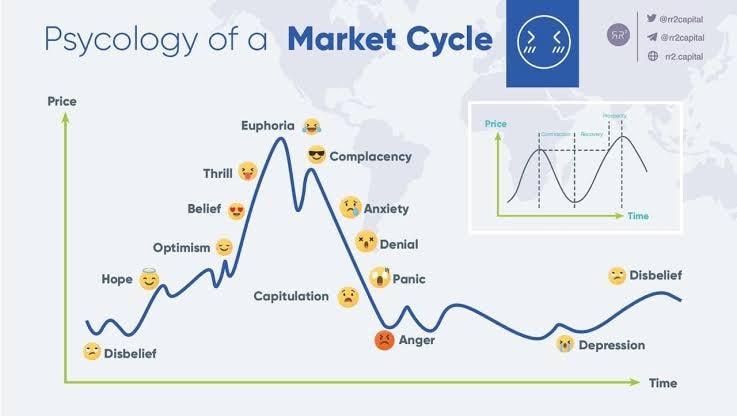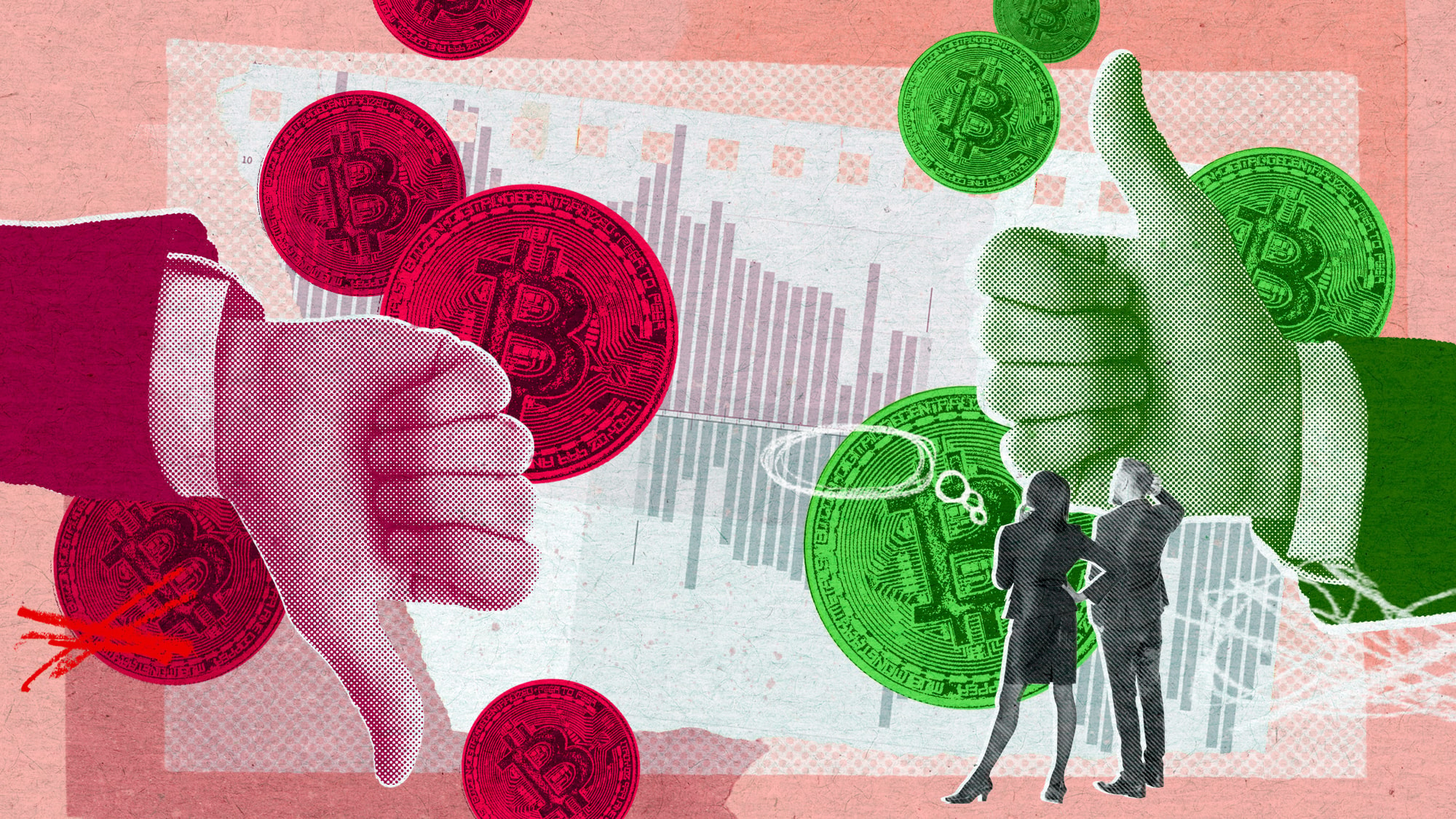Crypto Is Boring Again, and That’s Usually When the Smart Money Loads Up
Crypto is boring again, and that’s usually when the smart money loads up. Historically, periods of low activity in the crypto market have been precursors to significant price movements. This ARTICLE delves into why these seemingly stagnant times are actually strategic opportunities for seasoned investors and what you can do to capitalize on them.
Key Takeaways
- Periods of low activity in the crypto market, like the current stability seen in Bitcoin prices, often precede significant price movements and can be strategic times for investment.
- Historical trends show that previous lulls in crypto activity have led to substantial price surges, prompting savvy investors and hedge funds to accumulate assets during these calm periods.
- The growing interest from institutional investors and hedge funds, influenced by regulatory clarity, is reshaping the crypto landscape, highlighting cryptocurrencies as legitimate investment opportunities.
The Calm Before the Storm in the Crypto Market

The calm before the storm is a phrase that resonates deeply within the crypto market today. With Bitcoin’s price exhibiting unusual stability, the market appears stagnant to many. This perceived stagnation can lead to a lack of excitement among investors. However, history has repeatedly shown that these periods of low activity often precede significant price movements, making them strategic times for investments.
Bitcoin’s price stability, reduced volatility, and their impact on trading volume create a setting ripe for potential opportunities.
Bitcoin’s Price Stability
Bitcoin’s recent price stability is a phenomenon worth noting. Frequently hovering just above $16,000 and maintaining a recent price range around $20,000 (£17,300), Bitcoin’s steadiness contrasts sharply with its historical volatility. This stability follows a significant drop of 25% in price from November 5 to November 9, after which it traded within the $16,000s and $17,000s for nearly two months.
Such steadiness can signal to seasoned investors that significant movement might be on the horizon, presenting an opportunity for strategic trades.
Reduced Bitcoin Volatility
The recent decrease in Bitcoin volatility is another notable development in the crypto world. As market participants become more cautious, Bitcoin’s price movements have become more stable. This cautious sentiment can lead to fewer drastic price swings, making the crypto asset appear less risky.
However, reduced volatility often serves as a precursor to significant market movements. For those looking to trade Bitcoin, this period of calm might be an ideal time to strategize for future price actions.
Impact on Trading Volume
The impact of Bitcoin’s stability and reduced volatility on trading volume is profound. During these periods, strategic investors gradually increase their holdings, signaling an accumulation phase. This phase is characterized by stable prices and increased trading volumes, indicating that significant investors are building positions.
As these investors expect potential future price increases, the market’s perceived stagnation might actually be a sign of underlying strategic activity.
Historical Patterns: Boring Markets Precede Bull Runs

History has a way of repeating itself, especially in the crypto market. Periods of low market activity, often seen as boring, can precede significant price increases in cryptocurrencies. Historical data from the past week indicates that times of low market enthusiasm often foreshadow significant upward movements.
Understanding these patterns helps investors position themselves to capitalize on future market shifts. Previous lulls and surges, hedge funds’ strategies during quiet times, and the influence of central bank policies on crypto prices will be explored.
Previous Lulls and Surges
Historically, periods of inactivity in the cryptocurrency market have often foreshadowed substantial price rises. For instance, the cryptocurrency bull run of 2017 was preceded by a phase of low activity where Bitcoin’s price stabilized. Another example is Bitcoin’s rise from $13 to over $1,000 in 2013, which followed a similar lull.
Recognizing these historical patterns empowers investors to leverage low activity periods based on past activity for future gains.
Hedge Funds’ Strategies During Quiet Times
In quieter market phases, hedge funds tend to increase their exposure to cryptocurrencies, anticipating future price increases as conditions improve. These funds typically engage in strategic accumulation of undervalued assets during periods of low market activity.
Increasing their positions allows hedge funds to capitalize on anticipated price surges when the market rebounds, ultimately leading to higher profits.
Central Bank Policies and Crypto Prices
Central bank actions, particularly those of the Federal Reserve, can significantly impact cryptocurrency markets, especially during periods of low trading activity. Changes in interest rates can influence investor sentiment and, consequently, the prices of cryptocurrencies. For instance, decisions made by central banks can either bolster or dampen market enthusiasm, affecting Bitcoin’s price and volatility.
These policies impact the market, offering valuable insights for strategic investing.
Smart Money Moves: What Savvy Investors Are Doing Now

Current market stagnation suggests an unusual period that may be advantageous for informed investors. Low activity in the crypto market may signal a critical opportunity for wise investors to prepare for upcoming shifts. Experienced investors often increase their holdings during market lulls, anticipating future price increases.
Hedge funds are leveraging current market conditions to invest in stablecoins and other strategies, seeking high returns despite volatility. The accumulation phase, focus on fixed supply assets, and diversification into other cryptocurrencies are key strategies.
Accumulation Phase
In times of market calm, hedge funds accumulate assets, anticipating future price increases and positioning for potential bull runs. This accumulation phase occurs during less active periods, allowing asset acquisition at lower prices.
Savvy investors accumulate assets during stable price periods, expecting future volatility to drive price increases. These strategies are crucial for capitalizing on future market upswings.
Focus on Fixed Supply Assets
Assets like Bitcoin, which have a capped supply, are particularly appealing to investors during dull market periods. The scarcity of these assets can drive demand in the long run, making them attractive investments.
Fixed supply assets like Bitcoin are appealing because they tend to appreciate over time, especially as demand rises. Focusing on these assets is a strategic move during market calm.
Diversification into Other Cryptocurrencies
To mitigate risk, investors often diversify their portfolios by including various cryptocurrencies beyond just Bitcoin. This strategy spreads risk and potentially increases returns, as different digital currencies may perform differently.
During stable price periods, savvy investors gradually build their positions without triggering market volatility. Exploring altcoins helps hedge against Bitcoin’s volatility and targets growth potential across various sectors.
Wall Street’s Growing Interest in a Stable Crypto Market

Wall Street’s interest in the crypto market is growing, driven by the current period of stability. Despite a drop in the number of traditional hedge funds investing in cryptocurrencies, many still plan to maintain or increase their exposure to the world’s crypto market.
Regulatory agencies like the SEC and CFTC have intensified enforcement against fraud in the crypto sector to protect consumers. Growing interest is driven by regulatory clarity and potential high returns.
Let’s delve into the increased institutional investment, the role of hedge funds, and the regulatory environment’s impact.
Increased Institutional Investment
In 2023, there has been a notable rise in institutional capital flowing into cryptocurrencies, spurred by clearer regulations. Advancements in regulatory clarity, such as the approval of new crypto ETFs, are encouraging more institutional participation in the crypto market. This evolving landscape is causing traditional hedge funds to reassess their strategies.
Investors are increasingly drawn to capped supply cryptocurrencies like Bitcoin, viewing them as a hedge against inflation. Institutional investment signals growing mainstream acceptance of these digital assets.
The Role of Hedge Funds
Hedge funds play a significant role in the cryptocurrency market by:
- Trading digital assets like Bitcoin and Ethereum
- Employing various strategies such as market neutral and discretionary long/short
- Taking advantage of the inefficiency of the cryptocurrency market to easily identify arbitrage opportunities.
Crypto hedge funds enhance investment portfolios by offering higher returns with modestly increased volatility compared to traditional assets. Their strategies often include complex trades that outperform simple buy-and-hold approaches during downturns.
Institutions are increasingly becoming limited partners in crypto hedge funds, shifting the investor landscape from high-net-worth individuals to larger financial entities.
Regulatory Environment and Its Impact
Central bank policies, like those of the Federal Reserve, can directly influence crypto prices and market volatility. Wall Street is increasingly drawn to the crypto market as it stabilizes, viewing current market conditions as an opportunity for investment. The rise in institutional investment indicates a growing acceptance of cryptocurrencies as a legitimate asset class, partly propelled by regulatory clarity.
Hedge funds are adjusting their finance strategies, considering regulatory developments that may impact long-term investment opportunities.
Personalized Content and Ads in Crypto Trading Platforms
Personalized content and ads are crucial for user engagement on crypto trading platforms, especially during market lulls. Trading platforms prioritize age-appropriate content and advertising to ensure a suitable user experience, effectively engaging users even when the market is inactive. Ads are influenced by user preferences and behaviors.
Let’s explore how cookies and data are used for youtube homepage and tailored ads, the importance of engagement and site statistics, and managing privacy settings.
Use Cookies and Data for Tailored Ads
Platforms utilize cookies to track user behavior, which allows them to deliver highly personalized advertisements that match user interests. By leveraging cookies and user data, platforms create custom advertising experiences that aim to increase engagement and conversion rates.
Users should regularly review and adjust their privacy settings, depending on your settings, to control data use to show personalized ads depending on their preferences. This ensures users can manage data sharing and the personalized content they receive.
Engagement and Site Statistics
Monitoring audience engagement and site statistics to understand user behavior and improving services. Platforms use statistical data from user interactions to tailor services and enhance the overall experience.
This continuous monitoring helps platforms measure audience engagement, understand how their services are being used, and make necessary adjustments to meet user expectations and needs.
Managing Your Privacy Settings
Managing privacy settings on trading platforms ensures a secure and personalized trading experience, including details about managing user information. Platforms use cookies and data to tailor ads, but users can adjust settings to control information use. To learn more about managing your privacy, visit g.co privacytools.
Combatting spam, fraud, and abuse is essential for privacy management on trading platforms, employing various strategies to protect user accounts. This ensures users receive relevant and age-appropriate information while maintaining privacy preferences.
Protecting Against Spam, Fraud, and Abuse in Crypto Trading

User safety is a critical concern in the crypto trading environment, where threats like spam and fraud are prevalent. Trading platforms implement robust security measures to combat spam and fraud, ensuring user safety and building trust. These measures enhance the trading experience by protecting users’ investments from malicious activities and maintaining a secure environment.
Let’s explore how platforms track outages, ensure age-appropriate experiences, and maintain service quality to protect users.
Track Outages and Protect Services
Tracking outages ensures users have consistent access to trading services, maintaining platform trust. Platforms implement measures to protect against spam, fraud, and abuse, safeguarding investments and personal information.
Ensuring age-appropriate content and ads creates a safer environment and prevents exploitation. Maintaining service quality is crucial for user satisfaction and long-term retention in crypto trading.
Age-Appropriate Experience
Ensuring age-appropriate content and advertisements is crucial in creating a safe and suitable environment for users engaging in crypto trading. Crypto trading platforms employ personalized content and ads to enhance user engagement, especially during market lulls. These platforms utilize cookies and user data to deliver tailored advertisements, ensuring that the content is relevant to users’ preferences.
Users should manage their privacy settings effectively to control how their data is used for personalized content you’re currently viewing and to ensure that they receive age appropriate if relevant information.
Quality of Services
Maintaining a high quality of service on trading platforms is crucial for user retention and satisfaction, particularly in a fluctuating market. Trading platforms use personalized content and ads to enhance user engagement, especially during low market activity. Platforms leverage cookies and data to deliver and maintain google tailored ads, improving service relevance to user preferences. Ad serving is based on these strategies to optimize user experience, including location ad serving.
Measuring audience engagement and analyzing site statistics helps platforms deliver and measure user experience and boost service quality. Implementing measures to protect users against spam, fraud, and abuse ensures trust and a safer trading environment.
Tracking outages and implementing safety protocols are vital for maintaining service reliability, directly affecting user satisfaction. High user engagement and robust protections are indispensable for delivering the quality of those services on crypto trading platforms.
Summary
In summary, the current lull in the crypto market, marked by Bitcoin’s price stability and reduced volatility, presents a unique opportunity for strategic investors. Historical patterns suggest that boring markets often precede bull runs, and savvy investors, including hedge funds, are making strategic moves by accumulating assets and diversifying their portfolios. Wall Street’s growing interest, driven by increased institutional investment and regulatory clarity, further underscores the potential of the crypto market. Additionally, personalized content and ads, along with robust security measures on trading platforms, enhance user engagement and ensure a secure trading environment. Recognizing these opportunities and preparing for future market shifts can empower investors to capitalize on the next big wave in the crypto world.
Frequently Asked Questions
Why warren buffett against crypto?
Warren Buffett is against crypto primarily because it lacks intrinsic value and doesn’t generate income like traditional investments. He believes that cryptocurrencies do not provide the same tangible benefits as other asset classes.
Why is the current crypto market perceived as boring?
The current crypto market is perceived as boring because Bitcoin is experiencing price stability and reduced volatility, which diminishes the excitement that typically attracts investors.
What historical patterns suggest that boring markets precede bull runs?
Historical patterns show that periods of low market activity and enthusiasm typically signal impending bull runs in cryptocurrency markets, suggesting that a quiet market can be a precursor to significant price increases.
How do hedge funds respond to quiet times in the crypto market?
Hedge funds typically respond to quiet times in the crypto market by strategically accumulating undervalued assets, increasing their overall exposure to potential future gains. This proactive approach positions them advantageously for when market activity picks up.
What role do central bank policies play in the crypto market?
Central bank policies, particularly interest rate changes, play a crucial role in the crypto market by significantly influencing investor sentiment and pricing dynamics. These actions can create shifts in market behavior and asset valuation.



